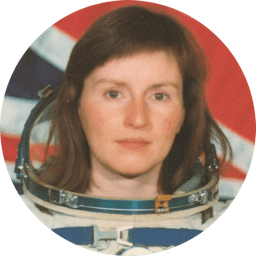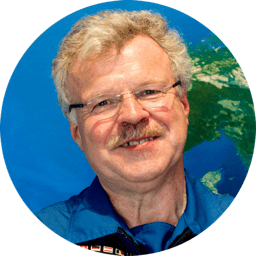On the 2nd September 2015, Andreas Mogensen became the first Danish astronaut to travel into space as part of the ESA Iriss mission. Andreas was hand-picked for the mission after joining the European Space Agency (ESA) in 2009 and acing a recruitment process with over 10,000 applications.
Blast off into the vastness of space with Andreas as your guide through our virtual space mission; Space Safari. With commentary provided in his native dialect, you’ll climb side-by-side to over one hundred kilometres above sea level, during which Andreas will share his experiences and memories from his time in space, as well as his experience of the Overview Effect. This phenomenon left Andreas with a lasting message, one he still stands by today - we all have a shared responsibility to protect the future of our planet and must act to save it.
Whether you have chosen Andreas to be your co-astronaut during your space mission or are interested in understanding more about Andreas’ path to becoming an astronaut, you can learn more about his unique journey with Ørsted below.
FACT BOX: Fun fact: Andreas’ career extends far beyond space – on two occasions, he has spent seven days living and working aboard Aquarius, the world’s only underwater research station, in 2013 and again in 2014 to become an aquanaut.
The first Danish astronaut
Andreas’ career dates back to 2004, where he worked as a research assistant at the Centre for Space Research at The University of Texas at Austin, while working on his doctorate. After joining ESA in 2009, beating approximately 10,000 applicants to be chosen as the first Danish astronaut, Andreas went on to complete the initial training programme at the European Astronaut Center in Cologne, Germany and qualify as a member of the European Astronaut Corps in November 2010. He was selected for the Iriss mission to the International Space Station (ISS) on account of his extensive training and theoretical background in aerospace engineering.Andreas spent years in preparation for the Iriss mission, undergoing rigorous physical and mental training. He travelled around the world experiencing mock-ups and simulators to get him ready for space flight, visiting Europe, Japan, the US, Canada, and Russia. His training also covered survival and recovery, including exercises that taught him what to do if his capsule were to land in water on the return journey. All of this culminated in his historic mission to the ISS, 2nd September 2015.
Andreas’ experience in space
On the 2nd September 2015, the Iriss mission was launched from Kazakhstan with spaceflight Soyuz TMA-18M, where Andreas, Sergey Volkov, and Aidyn Aimbetov would travel to the ISS. While aboard, Andreas engaged in a number of critical research tasks, helping to further our understanding of space and its relationship with Earth. As part of his duties, Andreas recorded lightning phenomena above thunderclouds, including red sprites and blue jets. He also experimented with controlling a robot on Earth’s surface from the ISS and actively tested a new kind of skin suit specifically designed to alleviate the back pain that astronauts often experience due to the microgravity in space, which causes the spine to extend. He descended back to Earth on the 12th September 2015.
Andreas’ experience of the Overview Effect
During spaceflight, many astronauts have discussed the awe-inspiring moment they saw Earth in its fragile glory from the depths of space, immediately filled with an urge to protect it. This is known as ‘the Overview Effect’ and it inspires the desire to protect our planet. When Andreas first saw the Earth from space, he too felt this effect; a cognitive shift in awareness that compels the individual to look past human differences and see the need for unity between all life on Earth.
Andreas explains that if more people could experience the Overview Effect for themselves, we would all become more environmentally conscious and could begin to live in harmony.
Eager for more people to experience the Overview Effect and work together, Andreas Mogensen and Ørsted invite you to embark on a journey that will take you to space and back: virtual reality Space Safari.
To join Andreas on a journey into space and experience our home from a different perspective, board your virtual spacecraft and see planet Earth like never before. 3… 2… 1… liftoff!



